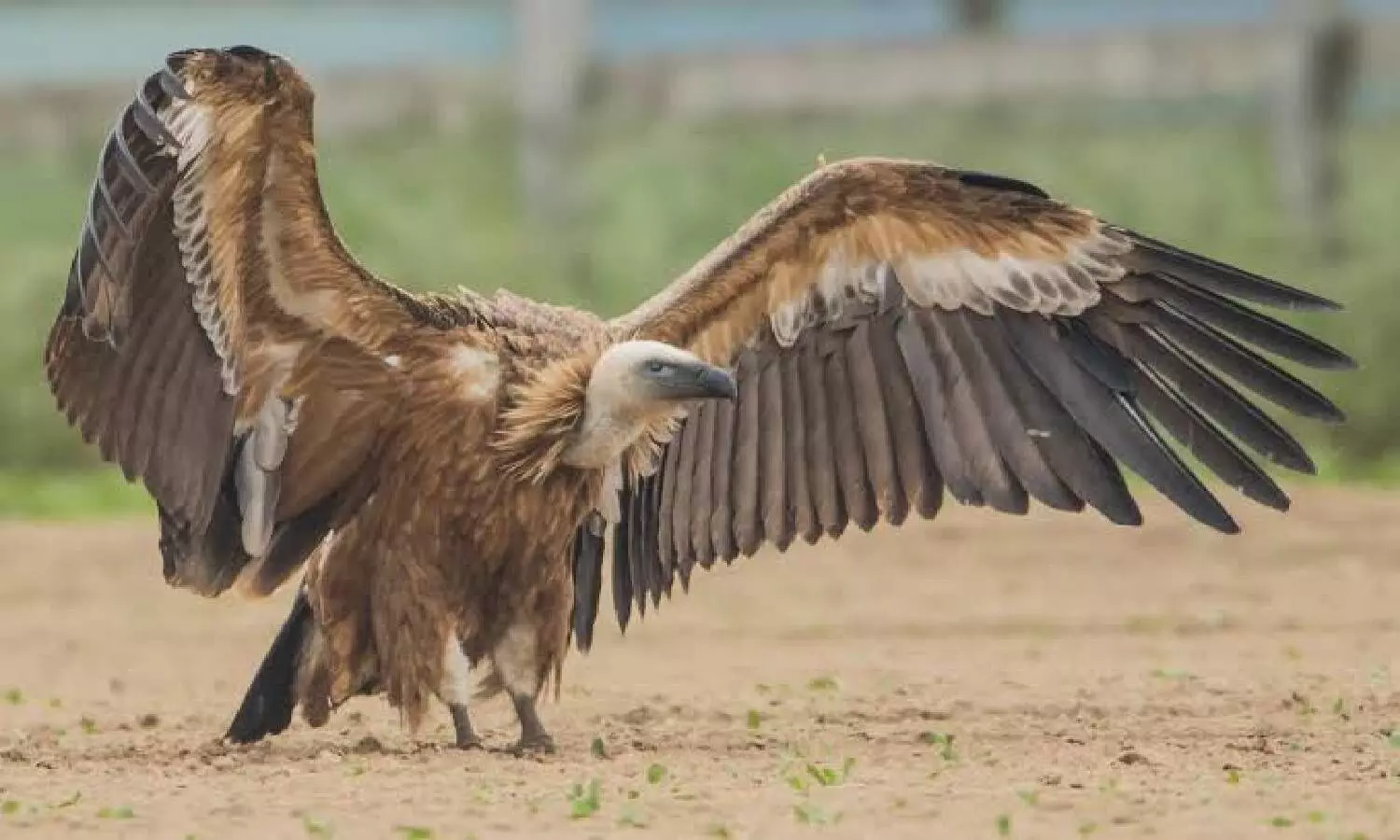'A flight for survival': 20 years on, group of vultures spotted in Amrabad Tiger Reserve
Recently a group of four vultures feeding on a carcass were spotted near river Krishna at Maddimadugu range of Amrabad.
By Nimisha S Pradeep
Hyderabad: On April 18, a group of forest officers of Amrabad Tiger Reserve (ATR) was as usual returning from the forest after their regular duties. They didn't know that a visual treat awaited them en route. A little later, to their surprise, they spotted a group of four vultures feeding on a carcass near river Krishna at Maddimadugu range of Amrabad. Vultures are usually seen near rivers or cliffs as they immediately clean their bodies after eating the carcass.
Rohith Goppidi, IFS officer at ATR said this is for the first time after the 90s when a group of vultures was spotted, though individual sightings have been there. "Earlier, in Kollapur in the southern part of Amrabad, one vulture was found. Similarly, I found one in Mannanur. So we believed that there was some nesting place of vultures nearby. And most of these vultures were old and looked like they would get extinct soon. But seeing a group of four is hopeful as there would be breeding and there is a possibility of having more vultures in the future," said Rohith.
Dwindling numbers of Long-Billed Vultures
The four vultures spotted in Amrabad recently belonged to the Long-Billed Vulture family, a critically endangered species listed on the IUCN Red List 2002. The population of this species of vultures marked a drastic decline over the years mainly due to diclofenac poisoning.
"These vultures feed over cattle mainly. The cattle are usually treated with a chemical called diclofenac, given as a painkiller for some internal problems in cattle. Due to bioaccumulation, when the vultures feed on these cattle carcasses, they intake this chemical, which turns poisonous and it affects their kidneys," explained Rohith. He also said that since thousands of vultures existed once upon a time, people never cared about the extinction of these birds.
Increased tiger population
Vultures usually circle in groups in the sky over an area and trace places where there are a lot of tigers. This hints at the possibility of a half-eaten carcass. Rohit said that there exists a symbiotic relationship between the two and the more the tigers in an area, the more the vultures there. "The vultures usually keep following the tigers for carcasses. In Amrabad, lately, the tiger population has been increasing. This could be the reason why more vultures were spotted recently inside the reserve," said Rohith.
Ecological impact
Being scavengers, vultures play a very significant role in an ecosystem. They eat carcasses and clean the environment and this is an essential process in the restoration of healthy forests. Lately, crows have taken up this role in some ecosystems. Rohith explained how this could be a problem. "Vultures eat a carcass at a rapid pace. Whereas, crows take a lot of time to finish eating a carcass. Leaving half-eaten carcasses for a long time would attract a lot of bacteria. As a result, the carcass itself becomes a source of various diseases," said Rohith.
Now having spotted a group of vultures, the forest officers of Amrabad are excited and are looking for ways to preserve the particular species. "Firstly, it has to be ensured that the cattle in the area are not being treated with diclofenac. Also now having known the possible places where vultures could be seen, carcasses should be arranged there exclusively for vultures out of the purview of other animals like wild boars," added Rohith.